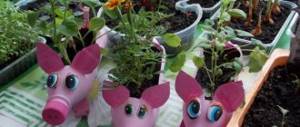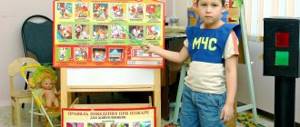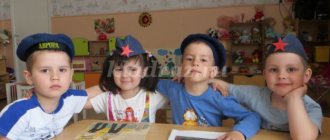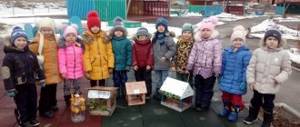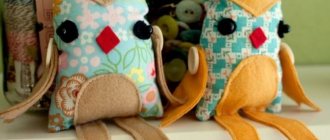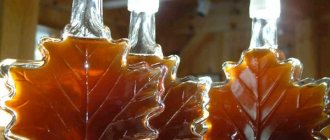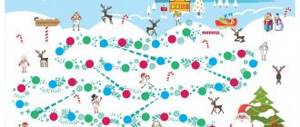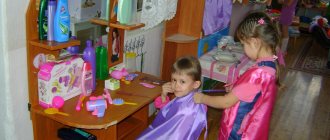What are “health-saving technologies”
The implementation of educational, preventive, health-improving and correctional measures in the educational process through various forms of cooperation between children, parents, teachers and doctors is called health-saving technologies. Based on the definition, we can conclude that this concept implies all aspects of the formation of a child’s personality: physical formation, cognitive development, and behavioral line. Such a wide range of impacts of health-saving technologies on the individual allows us to set the following goals for their implementation, which are the same when working with children of any age:
- ensuring the safety of life and health of children (for example, in educational areas there should be no toys with sharp elements or equipment that poses a threat to children);
- accumulation of children’s ideas about the concept of “health”, its priority both in their own lives and in the lives of other people;
- familiarization and practical implementation of methods of maintaining a healthy lifestyle (healthy lifestyle), including through the implementation of basic hardening measures agreed with parents;
Awakening gymnastics is also one of the ways to form the right attitude towards healthy lifestyle
- developing first aid skills (in the middle group, children learn first aid measures for cuts and abrasions).
In addition, health-saving technologies systematize:
- medical examination schedule;
- compliance with the regime of movement, eating and drinking;
- measures to provide psychological support to parents of children (teachers provide families of pupils with materials to address certain theoretical issues, including, for example, how to introduce hardening at home).
As for the specification of work in one or another area of health conservation, this is achieved by dividing technologies into types, each of which has its own tasks of preserving and promoting health.
Table: types of health-saving technologies and their tasks in the middle group
| Technology name | The essence of the concept | Specific tasks for children 4–5 years old |
| Physical education and recreation | Development of qualitative indicators of physical condition (flexibility, endurance, strength), as well as work aimed at meeting the children’s need for movement. |
|
| Preventive (medical) | Implementation of preventive measures to strengthen and preserve the health of pupils. |
|
| Social-psychological, implemented by the teacher in close contact with a psychologist through tests, as well as on the basis of observation of children. | Selection of methods and techniques to ensure the emotionally comfortable state of children. |
|
| Educational (valeological), aimed primarily at interaction with the families of students. | Involving families in a healthy lifestyle. |
|
Regular medical examination of children is an important element of the implementation of preventive health-saving technology in kindergarten
Types of work within health-saving technologies
Each of the health-saving technologies in the context of interaction with children 4–5 years old is implemented by certain methods of educational activities or types of work.
This is interesting. Methods of interaction with parents are mainly in the nature of conversation, tests, and involvement in entertainment.
Table: methods for implementing different types of health-saving technologies in the middle group
| Method of interaction | Why is it used? | Reception |
| Physical education and health technology | ||
| Rhythmoplasty | For the development of various muscle groups, memory, attention and sense of rhythm. In the middle group, the emphasis is on exercises that help develop correct posture, correct gait, and also for emotional liberation. | Exercise “Penguins are walking”: to the phrase “Ice and ice, and a penguin is walking on ice,” kids walk around the room on the inside of their feet, while they roll over from their left foot to their right and slap their sides. |
| Exercise “Snowman” Kids stand straight, legs at shoulder level, arms bent, extended forward. At the same time, the brushes are rounded. Children try to waddle from side to side like snowmen. | ||
| Physical education minute | It is used in every lesson to relieve intellectual tension, as well as to change the type of activity. | A card file of physical education minutes for the middle group can be found here. |
| Outdoor games | To meet the physical activity needs of 4-5 year old children. | You can find out about the types of outdoor games for the middle group here. |
| Relaxation | It is used to relax individual muscle groups, as well as for general relaxation of the whole body. | Exercise “Lemon” for relaxing arm muscles. Children lower their hands down and imitate squeezing juice with their right hand to the rhyme:
|
| Finger gymnastics | Promotes the development of fine motor skills, which in the middle group allows you to start working on preparing your hand for writing. | A list of finger games for the middle group is presented here. |
| Gymnastics for the eyes | For the prevention of visual impairment, as well as for the purpose of correcting existing deviations. In particular, some forms of strabismus. | You can find a card file of exercises for gymnastics here. |
| Breathing exercises | The goal of this type of work is to teach children to breathe correctly, fully providing the body with oxygen. | You can read more about this type of technology here. |
| Awakening gymnastics | To ensure a smooth transition from sleep to wakefulness. | Here are examples of awakening gymnastics exercises. |
| Preventive technology | ||
| Physical education classes | Direct educational activities that combine all interaction techniques aimed at preserving and strengthening the health of children. | Methodological features of preparing and conducting physical education classes in the middle group are presented here. |
| Self-massage | Children learn to understand their body, sensations, and also develop fine motor skills. | For hand massage:
|
| Games | They help to systematize the knowledge, skills and abilities of children related to the issues of preserving and strengthening the health of children through the main activity of children - play. | Didactic game “Healthy and harmful foods.” Kids put cards with pictures of different foods into two baskets (hats): one - healthy, the other - harmful. The kids name each product, trying to remember the teacher’s explanations of why this food is harmful or why it is healthy. |
| Imitation game “Hygiene rules”. The driver is selected using a counting machine. The rest of the participants receive a card with a picture of some hygiene procedure (washing, combing, wiping, etc.). Children take turns showing the procedure with facial expressions and gestures, and the driver guesses what is being said. | ||
| Video examples with games can be found here. | ||
| Socio-psychological technology | ||
| Musical impact | It is used mainly to create a positive emotional mood in children. Accompanies all stages of the daily regimen. | The morning gathering is carried out to the accompaniment of music, creating an atmosphere of comfort, warmth and mutual understanding. An ideal option for this, according to child psychologists, are the works of Mozart. In addition, you can use:
For daytime sleep, psychologists recommend quiet, calm works:
To relieve fatigue at the end of the day, the following would be appropriate:
|
| Art therapy | Helps to get rid of stress, relieves psychological tension, and also stimulates the development of interaction skills with other people, teaches you to be attentive and focused. Develops speech, thinking and memory. | Exercise “Doodle”: children draw chaotic lines with a simple pencil, then, independently or with the help of a teacher, try to see images in them, which they complete if necessary. After which the child describes his work. |
| Fairy tale therapy | A way of interacting with children that allows you to correct certain behavioral deviations in children. Fairytale therapy also helps to get rid of childhood fears. | At 4–5 years old, children, wanting to be like adults in everything, sometimes take on tasks that they are not yet capable of. Naturally, this leads to mistakes and the need to redo it. To combat boasting and biased assessment of oneself, I tell my students a fairy tale about the Swift-legged ant. “Once upon a time there was an ant named Swiftfoot. He was greatly appreciated in the anthill, because he was very good at building houses for his comrades. But one day Ant thought that the surrounding ants were only bothering him: they were trampling under his feet, running around. Then Ant decided that he didn’t need anyone for his work, and he would build the eastern part of the anthill himself. He drove away all his assistants, and although it was difficult, he did not give up. True, he did everything carelessly, they say, it will do. And now the time has come to hand over the work to the Ant King. To test its strength, the King ordered a thousand ants to jump on the rebuilt wing of the anthill. And after the first jump the house collapsed. Swiftfoot felt ashamed, he apologized for overestimating himself and boasting. The king gave him assistants, and after 4 days the house was completely rebuilt and also insulated.” After listening to the text, children discuss the plot on the following questions:
|
This is interesting. Valeological technology in working with children is implemented by all of the listed methods.
Video: preventive technology in the middle group - a physical education lesson on the topic “Visiting the Bunny”
Universal methods and techniques in working on health-saving technologies
In addition to the methods and techniques described above, in the process of educational activities on the implementation of health-saving technologies, the teacher uses universal methods and techniques.
This is interesting. Universal methods also include games, which were described above in the context of health-saving technologies.
Speech method
This way of interacting with children is implemented using:
- explanations (the essence of the concept being studied or the order of performing the exercise, game actions);
Explanation is a mandatory methodological technique when working with children.
- conversations to consider a particular phenomenon from all sides, as well as for generalization (for example, after listening to a fairy tale about Moidodyr, the teacher can ask about what Moidodyr did, how he forced the boy to follow the rules of hygiene, etc.);
- rhymes - poems and riddles, most often used for motivation (for example, the topic “We want to be healthy” can be prefaced with the following lines: In order to be completely healthy, everyone needs physical education. First, in order - Let’s do some exercises in the morning! And without any doubt there is a good solution - Running is also good for playing. Get involved, kids! To develop successfully, you need to do sports. Physical education will give you a slim figure).
Practical method
These are productive ways to interact with kids, allowing them to realize their creative potential. Techniques within this method include:
- drawings (in the middle group, these can be illustrations of healthy lifestyle rules, made both by the kids themselves and in collaboration with parents, for example, as part of the development of a health-saving project);
- appliques, for example, in my practice, kids cut out healthy foods from colored paper and stick them on, creating a “Health Basket.”
Working on this applique also trains the skill of carefully cutting out small details.
Visibility
Based on age-related characteristics of perception, children best remember what they see. That is, visibility is a mandatory element of working with children. The following techniques can be used:
- illustrations (for example, the order of performing different complexes of morning exercises);
- attributes (sports equipment for physical education, walking, simulators for breathing exercises, models of the human body, organs);
- demonstration (presentation of this or that material by a teacher, for example, an algorithm for performing breathing exercises);
- display - presentation of information using ICT (for example, children watch a cartoon about the importance of personal hygiene from the series “The ABC of Health with Smeshariki”, after which they discuss why Krosh became ill and what advice Nyushenka gave him).
Video: cartoon “The ABC of Health with Smeshariki”, series about personal hygiene
Health saving project Topic: “A healthy mind in a healthy body!”
Goal : to identify mechanisms and methods for introducing health-saving technologies with which it is possible to organize physical education in a preschool educational institution in such a way that it ensures harmonious development for each child, helps him use the reserves of his body to preserve, strengthen health and improve its level; introducing children to a healthy lifestyle.
Wellness tasks:
• protection and strengthening of the physical and mental health of children;
• improving the functions of the body, increasing its protective properties and resistance to diseases by means of movement, breathing exercises, finger games, massage, hardening;
• formation of correct posture and hygiene skills.
Educational objectives:
• formation of vital motor skills of the child in accordance with his individual characteristics;
• creating conditions for the fulfillment of children's needs for physical activity;
• identifying the interests, inclinations and abilities of children in physical activity and their implementation through a system of health-improving work.
Educational tasks:
• nurturing the need for a healthy lifestyle;
• developing the habit of following a regimen, the need for physical exercise and games;
• broadening your horizons, clarifying your ideas about the world around you;
• education of physical qualities necessary for the full development of the individual.
Project implementation : four weeks.
Expected results:
• reducing morbidity and increasing the level of health of children;
• active assistance and interest of parents in organizing work to improve the health of children.
Stage 1 . Selecting a topic.
Stage 2 . Work with children.
- Conversations: “How to become Hercules”, “Simple water and soap make microbes lose their strength.”
- Educational reading: “Talk about proper nutrition”, “Health Primer”.
- Entertaining games: “Games with clothespins”, “Games with paper clips”, “Games with counting sticks”, “Finger games”, “Puzzles” (motor skills).
- Exhibition of children's drawings: “Children and Sports”.
- Didactic games: “Health Pyramid”, “Harmful - Beneficial”.
- Collage: “Healthy Products.”
- Photo exhibition: “How we eat.”
Parents' participation in the project.
- Consultations for parents: “The first step on the path to health is hardening”, “Breathing exercises in the health of children.”
- Together with children, compose fairy tales on maintaining hygiene rules: “The Journey of Soap Bubbles”, “The Tale of a Toothbrush” with drawings.
- Selection of information in books on the topic of the project, search for illustrative material for compiling the collage “Useful Products.
- Writing reviews about the project.
Practical value of the project.
- Creation of a card index of finger games taking into account the age characteristics of children.
- Update of motor skills games “Games with clothespins”, “Grain to grain”.
- Design of the newsletter “Caring for the health of children is a common cause.”
- Development and production of notes of conversations, business games on valueology.
Project results:
During the implementation of the project, a favorable health-preserving environment was created, allowing children to expand their knowledge about ways to improve their health.
Promoting valeological knowledge among parents contributed to their paying more attention to their health and the health of their children.
Bibliography.
1. V.I. Loginova, T.I. Babaeva “Comprehensive program for the development and education of children in kindergarten.”
2. E. Sokolova “Visiting Ryzhik” development of fine motor skills of the hand. Golden series of development and education of a child from 3 years old.
3. O.V.Uzorova, E.A. Nefyodov “Finger gymnastics”.
Methodology for working on health-saving technologies
Any educational activity in kindergarten must be carefully planned. This allows you not only to rationally group topics, but also to calculate the time to consider each. The main form of implementation of health-saving technologies is direct educational activities (DEA), that is, classes. In addition, as part of the implementation of the goals and objectives of preserving and strengthening the health of children, leisure activities are held on topics. Both of these forms of work are reflected in long-range planning.
Table: Dementieva V.V. long-term plan for protecting the health of middle group children (fragment)
| Month | Subject | Program content | Materials and equipment | Joint activities with children | Joint activities with parents |
| September | "How the human body works" |
| Models: “human body”; "organs". |
| Seminar “Modern approaches to children’s health” |
| October | “Cleanliness is the key to health” | To develop in children an understanding of the importance and necessity of hygiene procedures. | Illustrations “Cultural and hygienic skills.” |
| Lapbook “Healthy: healthy child” |
| November | "What do we do when we eat" | Familiarize children with the purpose and operation of the digestive system. |
|
| Seminar on the topic “How to harden children at home.” |
In the middle group, in terms of health conservation, a lot of attention is paid to the development of sensory perception of children
Methodology for preparing a lesson on health conservation
According to the long-term plan, the teacher develops a lesson plan on the topic of health conservation, fitting its stages into the time frame for conducting lessons in preschool educational institutions established by regulatory documents.
Table: stages of classes in the middle group
| Stage | Time | Content |
| Introductory | Up to 2 minutes | Updating children's existing knowledge on the topic. |
| Basic | Up to 10 minutes | Familiarization with new material, as well as physical education (finger exercises, breathing exercises). |
| Stage of development, consolidation, material | Up to 6 minutes | As a rule, the practical implementation of what has been studied, that is, the creation of drawings and applications. |
| The final stage | Up to 2 minutes | The teacher’s assessment of the activities of the entire group as a whole and each child in particular. |
This is interesting. In modern practice of preparing and conducting classes in preschool educational institutions, the main stage and consolidation can be combined into one. This happens when the material is being worked on as one or another aspect is introduced into the course of the lesson, that is, children learn new things and immediately consolidate them.
The stage of consolidating the material usually includes a creative task
Table: Surma N.A., summary of a lesson on health conservation on the topic “Travel to the country of Neboleyka” in the middle group (fragments)
| Stage | Content |
| Introductory | Educator: - Today we have gathered with you to talk about health. What word is the word “health” similar to? That's right, the word health is similar to the word “hello.” When we say hello, we wish each other health. Let's say hello to each other and do it in the game. |
| Game “Hello, friend! " - Hello Friend! (Children stretch out their right hand to the side) - Hello, friend! (They extend their left hand to the side) - Get in a circle quickly, (Hold hands) We will walk in a circle (Walk in a circle) And we will find friends everywhere!…> | |
| <... Educator: - Guys, do you like to travel? How can you go on a trip? Children: - Car, train, bus... Educator: - Today I suggest you go on a trip to the country of Neboleyka. We'll go there by train. Do you agree? Take your seats in the trailers! (we move around the group)…> | |
| Basic | <… Educator: - There is another very simple way to improve your health - this is self-massage. This is stroking, rubbing, pressing. A person does this massage to himself. Self-massage - Nose, nose! (touch the tip of the nose with your index finger). Where have you been? - Mouth, mouth! (Run your index finger (two hands) up and down from the corner of your lips). Where are you little mouth?...> |
| <... Didactic game “Healthy - Harmful” - I suggest you grow miracle trees on which healthy and harmful products will grow. Here are pictures depicting various food products (vegetables, candies, fruits, chips, milk, a carbonated drink in a bottle, fish, ice cream, eggs, brown bread, etc.). Each of you will come up, take one card with a picture of a useful product and hang it on the tree. (The teacher explains why you should not eat chips and other junk food, why you should eat sweets in moderation). Educator: - Look, what is this? Pouch. And in the bag there are items that help us take care of our health. Let's play. | |
| Didactic game “Moidodyr’s Bag” Children guess personal hygiene items by touch (soap, comb, handkerchief, towel, mirror, toothpaste and brush, clothes brush) and tell what they are for and how to use them. It's time for us to return home to the d/s. We sit in our comfortable trailers. Educator: - Let's remember where we were??? Children: - In the country “Neboleyka” Educator: - What kind of country is this? Why is it called that? Children: - No one gets sick there and takes care of their health. To find your health and not lose it, you need to eat well, walk in the fresh air, do exercises every day and remember to wash your hands. Educator: - Residents of the country “Neboleyka” have compiled some useful tips for you: To grow and toughen up, you need to play sports; Let you not be too lazy to brush your teeth 2 times a day; Fruits and vegetables before meals Carefully, very diligently wash...> | |
| Conclusion | <… Educator. - Guys! You have learned a lot of useful things about health today, and I see a smile on your faces, and a smile is the key to a good mood. This is how we give each other health and joy! Good health to you! |
Development of an open lesson
The methodology for preparing a demonstration lesson is no different from the structure of a regular lesson. The only addition: in an open lesson, the work is usually carried out either completely or partially (in the form of separate tasks) on behalf of a fairy-tale character, which adds entertainment to the lesson.
An open lesson can also be based on a change of roles, when children take turns performing the functions of a teacher.
Table: Kutumova N., summary of an open lesson on health conservation on the topic “Where health hides” in the middle group (fragments)
| Stage | Content |
| Introductory | Presenter: - Today we have gathered with you to talk about health. What word is the word “health” similar to? That's right, the word health is similar to the word hello. When we say hello, we wish each other health. Let's say hello to each other and do it in the game. Communication game “Hello, friend!”...> |
| Basic | <...Host: - Guys, look, a gnome has come to visit us, let's say hello to him. But for some reason he is very sad. (addressing the gnome): - What happened to you, gnome, why are you so sad? Dwarf: - Guys, I came to you for help. I’m completely exhausted, it seems to me that I’ve lost my health and don’t know where to find it. Will you help me? |
| Host: - Guys, who do you think can help the gnome, who knows everything about health and what needs to be done so as not to lose it. (Doctor) Where can I find a doctor? (In the hospital); How can I call a doctor here? (By phone); What phone number do you call a doctor? (03)…> | |
| <... Doctor: - I’ll tell you a little secret. Our health can be compared to the sun, which has many rays. These rays live in every cell of our body. To find out what the first ray of our sunshine of health is called, I suggest you play a game called “Correct, correct, absolutely correct.” I will tell you little poems, if they say what is right, then you all say together, “Right, right, absolutely right,” and if the poem says what should not be done, then you are silent. Did you understand? To grow and harden, you need to play sports; Let you not be too lazy to brush your teeth 2 times a day...> <... - To be healthy you need to maintain personal hygiene. I open the first ray of sunshine for health (Hygiene)…> | |
| <… I open the 5th ray “Good mood”. - Guys, to have a good mood, you need to have many friends. Don’t quarrel with them and give each other only smiles...> | |
| Final | <... Now I can be calm that the guys from the middle group of kindergarten No. 4 “Cockerel” will always be healthy and will teach all their loved ones to take care of their health. Because you are so smart, active, and kind, I brought you vitamins. This is vitamin juice. |
| Educator. - Guys! Today you have learned a lot of useful things about health and I see a smile on your faces, and a smile is the key to a good mood. This is how we give each other health and joy! Good health to you! Let's find out from the guests what mood they are in now? (people's faces are heard and guests stick on their mouths depending on their mood). | |
| https://www.maam.ru/detskijsad/-gde-prjachetsja-zdorove-konspekt-otkrytogo-zanjatija-v-srednei-grupe-po-zdorovesberezheniyu.html | |
Leisure activities for health conservation in the middle group
Educational activities in the process of developing health-saving technologies in the middle group are also implemented through the preparation and conduct of leisure activities (entertainment). One of the most significant holidays is Health Day, which is held 1-2 times a year (usually in autumn and spring) is traditional in modern preschool educational institutions . The main goal of organizing Health Day is to create a positive emotional climate in the team of children, parents who are involved in work, and teachers. This type of entertainment involves development throughout the day (!) and represents a whole range of activities.
Leisure activities can be held both on the street and in the gym
Table: Kalinina O.A., thematic plan for Health Day in the middle group (fragments)
| Time period | Activities | Goals |
| Morning | Conversation: Topic: “What is health?” |
|
| Looking at illustrations | To clarify children’s ideas about different types of sports, the very concept of “sport”, about why people play sports and physical education; | |
| Didactic game: “Healthy food store” |
| |
| Morning exercises and breathing exercise “Favorite Nose”: And now, without delay, We will learn the exercises, Don’t forget them, friends, And repeat them often. Stroke your nose from the wings to the bridge of the nose - inhale, back - exhale (5 times) Inhale - stroke your nose From the wings to the bridge of the nose Exhale - and back Our fingers are asking. Inhale through your left nostril; the right one is closed, exhale through the right nostril, while the left one is closed (5 times)…> |
| |
| GCD | Didactic game: “Wonderful bag” | By touch, guess personal hygiene items (soap, comb, handkerchief, towel, mirror, toothpaste and brush, clothes brush) and tell what they are for and how to use them. |
| Guessing riddles |
| |
| Drawing “Vitamins for health” | Repeat types of lines to create drawings (contour, main line). | |
| Walk | Game "The Most Accurate" | Development of the eye, coordination and speed of movements in large and small muscle groups. |
| Game “Name the harmful product” | Clarify children's knowledge about the benefits and harms of different products, teach them to separate them. | |
| Observations of weather and clothing | Teach children the ability to determine the state of the weather and see the relationship between it and people’s clothing. | |
| Evening | Invigorating gymnastics |
|
| Role-playing game "Polyclinic" |
| |
| Game "Fix Me" | To consolidate children's knowledge of what benefits or harm products bring. | |
| Summarizing |
| |
Short-term project on health-saving technologies in the senior group “I want to be healthy”
Larisa Simoganova
Short-term project on health-saving technologies in the senior group “I want to be healthy”
MDOU "Kindergarten No. 164"
Saratov
Short term project:
“I want to be healthy !”
senior group
Teacher: I qualification category
Simoganova Larisa Vladimirovna
Project participants : Senior , parents.
Problem: Caring for the health of children has become a priority all over the world. Today it is important to form and maintain parents’ interest in improving the health of both themselves and their children. Help them understand that health means not only the absence of disease, but also mental and social well-being.
Goal: Formation of beliefs about healthy lifestyle , development of cognitive and creative abilities of children of the older group .
Objectives: To form in children an idea of health as one of the main values of human life, of the ability to protect and care for their health . To form a knowledge base and practical skills for a healthy lifestyle . Instill the need for a healthy lifestyle , respect for exercise, sports, and pay attention to the fact that order and cleanliness contribute to good health . Introduce winter Olympic sports. Develop free communication with adults and children about health and a healthy lifestyle .
Preparatory stage.
1. Selection of methodological and didactic material.
2. A selection of fiction.
3. Development of direct educational activities for the project .
4. Design of moving folders for parents on the topic of the project .
6. Selection of proverbs, sayings, riddles on the topic of the project
7. Making board games based on the theme of the project .
Main stage.
GCD in the educational field "Cognition"
.
1."Olympic sports"
.
2."The Olympic Games are coming soon"
3."Journey to the Land of Health "
.
4."If you want to be healthy "
.
5.“Can vegetables harm your health ?”
6. Reading poems by E. A. Alyabyeva “ I want sweets ”
,
"Sweet tooth"
.
GCD in the educational field "Socialization"
.
1. Didactic games: “Who needs what”
,
“Name the sport”
,
“Collect a picture”
,
“Guess the sport based on the display”
.
2. Theater "10th Kingdom"
, play
"Apchhi"
.
3. Game-conversation “I love vitamins, I want to be healthy ”
.
4. Role-playing games: “At a doctor’s appointment”
,
"Hospital"
.
5. Board game “Healthy and Vitamin Products”
.
6.Verbal games: “Characteristics of a healthy person ”
,
“The fourth wheel”
,
“Yes or no”
.
7. Board game “Sports Equipment”
.
8. Sports entertainment on the theme “Trip to the Sochi 2014 Winter Olympics”
GCD in the educational field "Artistic Creativity"
1. Application “Where do vitamins live?”
2. Drawing “Vitamin Products”
.
3. Modeling “Winter fun”
.
4. Drawing “Children doing exercises”
.
Working with parents.
1. Consultation “Daily routine as a means of raising a healthy child ”
.
2. Consultation “Joint work of kindergarten and family on physical education”
».
4. Mobile folder “Movement and health ”
.
6. Selection of proverbs, poems and riddles on the topic of the project .
The final stage.
Integration of educational areas: “Cognition”
,
“
Health ” ,
“Socialization”
,
“Communication”
,
“Music”
,
“Physical Education”
,
“Fiction”
on the topic:
“Journey to the Land
of Health ” .
Expected results:
1. Expanding children's ideas about a healthy lifestyle .
2. Expanding children's knowledge about winter sports and the Winter Olympics.
3. Children will get acquainted with literary works on the topic of the project .
4. They learn what is useful and what is harmful for the body, what you need to know and do to maintain health .
5. Children will expand their knowledge about proper nutrition and its importance for health .
Application:
1. A selection of proverbs and sayings about health and a healthy lifestyle .
2. Play massage “Let’s play with our hands”
.
3. A selection of poems about a healthy lifestyle .
4. A selection of riddles on the topic “ Health ”
.
5. Gymnastics for the eyes, breathing exercises.
6. Material about medicinal plants “Green pharmacy near us”
.
7. Children’s drawings “Vitamin products”
.
8. Application for children “Where do vitamins live?”
.
9. Photo report “ Movement-health ”
.
Health saving projects in the middle group
Project activity is one of the options for implementing a practical method of working with children. This technique is designed to reveal the creative potential of children, as well as to encourage initiative in work, expanding the children’s understanding of the topic. Projects can be of two types:
- short-term, not requiring much time for preparation, clarifying one or another aspect of the topic being studied (drawings, posters, booklets, etc.);
- long-term, involving certain stages of development.
Photo gallery: examples of short-term projects on healthy lifestyle
I limited my students: there should be no more than 6 positions in drawings or diagrams
The project can be done with parents
In the process of working on this project, kids clarify their ideas about what vitamins are
The project is most often carried out jointly with parents and a teacher.
Children in the middle group should be given the task more often to describe such schematic drawings
Methodology for working on a long-term project
This type of practical activity requires preliminary study of the theory of the issue. Therefore, the development of a long-term project occurs in three stages:
- preparatory, in which children gain knowledge on the topic (for example, while working on a task related to the importance of hardening, the children listened to and discussed S. Mikhalkov’s poem “About Mimosa”);
- the main one is the implementation of the project idea (in our example it was a dramatization of the work of S. Mikhalkov);
- reporting - preparation of a presentation in the form of a booklet, photo gallery on the completion of the task.
An example of drawing up a project passport is given in the development of T.B. Shantseva.
Report on summer recreational work in the middle group of kindergarten
Analysis of classes is an integral part of methodological work on the implementation of health-saving technology. More information about the algorithm for its compilation can be found here.
However, in addition to GCD, the analysis is also carried out for other types of educational activities on health conservation, in particular for a report on summer health work.
This is interesting. The main feature of the summer version of organizing the educational process is that all types of activities are transferred to the street.
Report generation algorithm
The report composition scheme includes coverage of the following aspects of the work:
- description of the goals and objectives of summer wellness;
- a list of forms of interaction (for example, educational activities, independent work of children, individual activities, interaction with parents, leisure activities);
- an overview of the techniques and means used in work (for example, gaming techniques, options for verbal interaction using toys, sports equipment);
- assessment of the effectiveness of selected techniques and means;
- a brief overview of the work done to organize interaction with parents (events, involvement in the design of a subject-development environment, etc.);
- presentation of the results of practical activities of children (dramatizations, exhibitions of drawings, booklets, etc., presented in the form of a photo report);
- conclusions about the general health of children and assessment of the health-improving work carried out.
The report on summer recreational work may be more detailed, or a little less detailed. The “golden mean” can be considered the option presented here.
Summer recreational activities in April-May involve repetition of the material covered during the year.
Health conservation in the middle group is developed by all types of technologies practiced in kindergarten to preserve and strengthen the health of children, as well as to educate parents. The methodology for organizing educational activities in the aspect of health conservation has a number of features related to the content of the work, for example, an emphasis on performing various types of physical exercises. In this case, the main form of interaction will be play. Like other educational areas, health conservation requires regular analysis of the effectiveness of work, including the preparation of a report on the summer health of children.
Project “System of work on health conservation in preschool educational institutions”
Justification for the need to create the project:
Health is not only the absence of disease, it is a state of optimal performance, creative output, emotional tone, that which creates the foundation for the future well-being of an individual.
Caring for the health of children and adults has become a priority all over the world, since any country needs creative, harmoniously developed, active and healthy individuals.
The current state of society, the highest rates of its development, represent ever new, higher demands on a person and his health. The importance of the cult of health is increasing significantly. Also V.A. Sukhomlinsky wrote: “I am not afraid to repeat again and again: caring for health is the most important work of educators. Their spiritual life, worldview, mental development, strength of knowledge, and self-confidence depend on the cheerfulness and vigor of children.” “Health is a peak that everyone must conquer themselves,” says Eastern wisdom. The task of teachers is to teach children to conquer this peak.
Preschool age is decisive in the formation of the foundation of physical and mental health. After all, it is up to the age of 7 that a person goes through a huge developmental path, unique throughout his entire subsequent life. It is during this period that intensive development of organs takes place, the formation of functional systems of the body, the basic personality traits are laid, character is formed, the attitude towards oneself and towards others.
Teachers must teach the child to make the right choice in any situation, only what is beneficial to health and to reject everything harmful, instill a value-based attitude towards one’s health, and a sense of responsibility for it. These tasks must be solved by creating a holistic system to preserve the physical, mental and social well-being of the child.
Analyzing the morbidity statistics of our pupils, we came to the conclusion that the health-improving activities carried out in the preschool educational institution were not enough; the families of pupils do not always pay due attention to a healthy lifestyle. A survey of parents showed that despite full awareness and positive motivation, a significant part of families do not find a place for it in their lives.
It should be noted that the success of this project depends on the educational institution’s systematic approach to solving this problem. A coordinated policy is required, declared at all levels of operation and management of an educational institution and supported by a comprehensive action plan.
Project passport.
Project type: practice-oriented, open Project participants: preschool employees, pupils and their parents Duration: long-term Implementation period: June 2013 – June 2014 Project implementation stages: • Stage 1 – Analytical. • Stage 2 – Practical. • Stage 3 – Main. • Stage 4 – Final.
Author of the project: Dautova Venera Khambalovna - teacher of the MADOU DS No. 16 "Rodnichok" Yanaul, Republic of Bashkortostan.
Project goal: Creation of a health conservation system based on building algorithms for the activities of all subjects of the educational process of preschool educational institutions, ensuring the preservation and strengthening of the child’s physical and mental health and the formation of the foundations of a healthy lifestyle.
The project intends to combine the already accumulated experience of the teaching staff in protecting and promoting children’s health, using modern health-preserving technologies, through the implementation of an integrated approach. Project objectives: • Coordinate the work of all participants in the educational process /teachers, medical personnel, kindergarten administration, parents/ to reduce the incidence of illness among pupils and form the foundations of a healthy lifestyle. • Optimize the system of physical education and health work in preschool educational institutions, through the introduction of modern health-saving technologies in the educational process; • Develop a model for constructing methodological work to improve the competence of teachers; • Develop a methodology for using a system of work to develop health-saving behavior in children in specially created and life situations; • Develop and adapt a monitoring system for a comprehensive assessment of the level of knowledge of children, the professional capabilities of teachers and the pedagogical awareness of parents; • Design a model of cooperation between kindergarten and family to form a conscious, creative, caring attitude towards children’s health in order to improve its level; • Intensify interaction between preschool, general and additional education institutions in order to increase interest in sports and a healthy lifestyle;
Stages and mechanisms of project implementation
Stage I – analytical/June 2013 Purpose: analysis of the conditions created in the preschool educational institution, identification of problems, forecasting of work results in order to determine the basic concept of the project and directions of work. • Information and analytical activities: - analysis of the health status of children; — analysis of the development of children’s motor skills; — assessment of the organizational and material and technical conditions of the preschool educational institution; — formation of an information bank of data on a healthy lifestyle (analysis of psychological, pedagogical and methodological literature on health issues). — Organizing the work of the Creative Group to identify problems and predict work results.
Stage II – practical July 2013 – August 2013 Goal: Development of a system of work on health conservation in preschool educational institutions - “Be healthy, baby!” • Planning and forecasting activities: A set of measures to ensure the implementation of the project: - Development of a system of a single health-preserving space in kindergarten and family for the effective organization of health-improving work with preschoolers; — Development of a model of a health-saving system “Be healthy, baby!” — development of methodological recommendations for using the System / pedagogical tools /; — systematization of interaction with social partners in order to increase interest in sports and a healthy lifestyle; — development of a system for monitoring intermediate and final results of the project.
Stage III – main September 2013 – April 2014 Goal: Organizing an effective system of interaction between participants in the educational process. • Organizational activities: Training teachers and parents in effective technologies in the field of health conservation and the formation of a healthy lifestyle strategy. — Development of long-term plans for working with teachers and parents; — Preparation of methodological materials for teaching students and parents modern approaches to maintaining health; — Organization of cooperation with the district hospital, youth sports school, sports committee, regional recreation center; — Organization of operational control of the use of the health conservation work system in the joint activities of teachers with children and independent activities of children. • Regulatory and correctional activities: Organization of the work of the Creative Group: - on the implementation of the project and the use of health-saving technologies; — on tracking intermediate results and on the need to adjust the work to implement the project.
Stage IV - final May - June 2014 Purpose: To summarize the work in the project, analyze the results obtained, and determine prospects for the future. — Using active forms of methodological work: trainings, pedagogical self-analysis of teachers’ activities, solving problem situations; — Monitoring a comprehensive assessment of the level of knowledge of children, questioning teachers, surveying parents — Summing up the results of the project.
Resource support
1. Improving the professional competence of teachers: theoretical component, practical component; motivational component. 2. Creation of algorithms for working to protect the health of all subjects of the educational process of preschool educational institutions. 3. Creation of a comprehensive system of work on health conservation in the kindergarten No. 16 “Rodnichok”, Yanaul “Be healthy!” 4. Development of methodological recommendations for the use of health-saving technologies 5. Reduction of morbidity in children by 6% 6. Development of a monitoring system; 7. Creation of a family club “Healthy family - healthy child”
Mechanisms for evaluating results: observations, questionnaires, conversations with teachers, self-analysis, pedagogical diagnostics.
Further development of the project. As a result of this project, an effective system of work in preschool educational institutions will be created to preserve and strengthen the health of children and introduce them to a healthy lifestyle, which will provide a comprehensive solution to health, educational, developmental and educational tasks, as well as the improvement and modernization of the educational process with preschoolers.
Upon implementation of this project, we plan to expand its boundaries by involving village and district preschool institutions in this activity. The project can be implemented in any preschool educational institution.
Author: Dautova Venera Khambalovna, teacher, MADOU D/S No. 16 “Rodnichok”, Yanaul, Republic of Bashkortostan
The article is published in the author's edition
